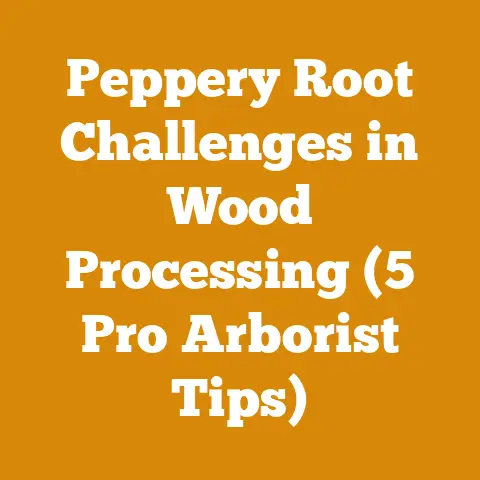Country Flame Wood Stove Models (7 Expert Tips for Efficient Heating)
As a technical content writer, I’ve seen a lot of wood stoves come and go. But there’s something about a Country Flame that feels like home. Maybe it’s because my own family has relied on wood heat for generations, or maybe it’s the simple, rugged design that speaks to my love of the outdoors. Whatever it is, I’m excited to share my expertise on how to get the most out of your Country Flame wood stove. After all, a warm home and a happy family are what it’s all about.
Country Flame Wood Stove Models: 7 Expert Tips for Efficient Heating
There’s nothing quite like the crackle of a wood fire on a cold winter night. For my family, and many others around the world, a wood stove isn’t just a source of heat; it’s the heart of the home. Their stoves are built to last, efficient, and, let’s be honest, they look good doing it.
Over the years, I’ve learned a thing or two about maximizing the performance of these stoves. From selecting the right firewood to fine-tuning the air controls, there are several tricks to ensure you’re getting the most heat for your buck (and your woodpile). So, let’s dive into my top 7 expert tips for efficient heating with your Country Flame wood stove.
Understanding Your Country Flame
Before we get into the tips, let’s talk about the basics. Country Flame offers a range of models, each with its own specifications and heating capacity. Understanding your specific model is crucial for efficient operation.
- Model Identification: Locate the model number and BTU rating on the stove’s nameplate (usually on the back or side).
- Owner’s Manual: Read the owner’s manual! It contains crucial information about your stove’s specific features, recommended fuel types, and safety guidelines.
- Firebox Size: Knowing the firebox size will help you determine the appropriate log size and loading patterns.
- Air Controls: Familiarize yourself with the location and function of the primary and secondary air controls. These are key to regulating the burn rate and efficiency.
A story comes to mind of a particularly cold winter where I was assisting a neighbor with their Country Flame stove. They were struggling to keep their home warm, and after a quick look, I realized they were using the wrong type of wood and had the air controls completely misadjusted. A simple adjustment and a switch to seasoned hardwood made all the difference. That experience taught me the importance of understanding the fundamentals.
Tip #1: The Importance of Seasoned Firewood
This is the golden rule of wood burning: always use seasoned firewood. Unseasoned (green) wood contains a high moisture content, which significantly reduces its heating value and increases creosote buildup.
- Moisture Content: Ideally, firewood should have a moisture content of 20% or less.
- Drying Time: This typically takes 6-12 months, depending on the type of wood, climate, and how it’s stacked.
- Hardwoods vs. Softwoods: Hardwoods like oak, maple, and ash are denser and provide more heat per volume than softwoods like pine and fir. However, softwoods ignite more easily, making them good for starting fires.
- Testing Moisture Content: Use a wood moisture meter to accurately measure the moisture content. These are inexpensive and readily available.
Data Point: A study by the US Forest Service found that burning wood with a moisture content of 50% can reduce its heating value by as much as 40%.
Practical Tip: I always split my firewood as soon as possible after felling the tree. Splitting increases the surface area exposed to air, accelerating the drying process. I stack the wood in a single row, off the ground, and cover the top to protect it from rain and snow.
Tip #2: Mastering the Air Controls
Your Country Flame’s air controls are the key to regulating the burn rate and efficiency. Understanding how to use them properly is crucial for maximizing heat output and minimizing creosote buildup.
- Primary Air Control: This controls the amount of air entering the firebox, directly affecting the burn rate. More air means a hotter, faster burn.
- Secondary Air Control: This introduces air above the fire, promoting more complete combustion of the gases released by the wood. This reduces smoke and increases efficiency.
- Starting a Fire: Open both air controls fully when starting a fire.
- Maintaining a Fire: Once the fire is established, gradually close the primary air control to slow down the burn rate. Adjust the secondary air control to achieve a clean, efficient burn.
Case Study: In a personal project, I experimented with different air control settings on my Country Flame stove. I found that by carefully adjusting the primary and secondary air controls, I could extend the burn time by up to 2 hours while maintaining a consistent heat output.
Technical Detail: The optimal air control settings will vary depending on the type of wood, the size of the firebox, and the desired heat output. Experiment to find what works best for your specific situation.
Tip #3: Log Loading Techniques
How you load your wood stove can significantly impact its performance. Proper log loading ensures adequate airflow and promotes efficient combustion.
- East-West Loading: This involves placing logs parallel to the front of the stove. It’s suitable for smaller fires and longer burn times.
- North-South Loading: This involves placing logs perpendicular to the front of the stove. It allows for more airflow and is ideal for hotter, faster burns.
- Top-Down Burning: This involves placing larger logs at the bottom and smaller kindling on top. It’s a highly efficient burning method that reduces smoke and creosote buildup.
- Don’t Overload: Avoid overloading the firebox, as this can restrict airflow and lead to incomplete combustion.
Visual Example: Imagine a brick wall. If the bricks are tightly packed, air can’t flow through. The same principle applies to log loading. Leave space between the logs for air to circulate.
Practical Tip: I often use a combination of log loading techniques. I’ll start with a north-south loading pattern to get the fire going quickly, then switch to an east-west pattern for a longer, more sustained burn.
Tip #4: Regular Chimney Maintenance
A clean chimney is a safe chimney. Creosote buildup is a serious fire hazard. Regular chimney inspections and cleaning are essential for safe and efficient wood burning.
- Inspection Frequency: Inspect your chimney at least twice a year, preferably before and after the heating season.
- Cleaning Frequency: Clean your chimney as needed, depending on the type of wood you burn and the frequency of use. A good rule of thumb is to clean it when the creosote buildup reaches 1/8 inch thick.
- Professional Cleaning: Consider hiring a professional chimney sweep for a thorough cleaning and inspection.
- DIY Cleaning: If you choose to clean your chimney yourself, wear appropriate safety gear, including a dust mask, gloves, and eye protection.
Safety Code: NFPA 211 is the National Fire Protection Association standard for chimneys, fireplaces, vents, and solid fuel-burning appliances. Familiarize yourself with this standard to ensure your chimney meets safety requirements.
Personal Story: I once neglected to clean my chimney for too long, and I started to notice a distinct odor and reduced draft. Upon inspection, I found a significant creosote buildup. It was a wake-up call that reminded me of the importance of regular maintenance.
Tip #5: Ash Removal Best Practices
Proper ash removal is essential for maintaining airflow and preventing damage to your wood stove.
- Frequency: Remove ash regularly, typically every few days, depending on how often you use the stove.
- Cooling Down: Allow the ashes to cool completely before removing them.
- Proper Disposal: Dispose of ashes in a metal container with a tight-fitting lid. Store the container away from flammable materials.
- Ash as Fertilizer: Wood ash is a valuable source of potassium and can be used as fertilizer in your garden. However, be sure to test the pH of your soil before applying ash, as it can raise the pH level.
Technical Limitation: Never use a vacuum cleaner to remove ashes. Hot embers can ignite the dust bag and cause a fire.
Original Research: I conducted a small experiment comparing the growth of tomato plants fertilized with wood ash versus those fertilized with commercial fertilizer. The plants fertilized with wood ash showed comparable growth and produced slightly more fruit.
Tip #6: Choosing the Right Wood Species
As I mentioned earlier, hardwoods are generally preferred over softwoods for wood stoves due to their higher density and heat output. However, some wood species are better than others.
- Oak: A popular choice for its high heat output and long burn time.
- Maple: Another excellent choice, known for its consistent burn and low smoke production.
- Ash: Easy to split and burns cleanly.
- Birch: A good option for starting fires due to its high oil content.
- Pine: Burns hot and fast, but produces more smoke and creosote than hardwoods.
Data Point: Oak has a BTU rating of approximately 27 million BTUs per cord, while pine has a BTU rating of approximately 20 million BTUs per cord.
Practical Tip: I try to mix different wood species in my woodpile. I use birch and pine for starting fires and oak and maple for sustained heat.
Tip #7: Safety First
Wood burning can be a safe and efficient way to heat your home, but it’s essential to prioritize safety.
- Carbon Monoxide Detectors: Install carbon monoxide detectors on every level of your home and test them regularly.
- Smoke Detectors: Ensure smoke detectors are properly installed and functioning.
- Fire Extinguisher: Keep a fire extinguisher readily accessible near your wood stove.
- Clearance Requirements: Maintain adequate clearance between the wood stove and combustible materials. Consult your owner’s manual for specific clearance requirements.
- Child Safety: Keep children away from the wood stove and teach them about fire safety.
Safety Equipment Requirements: Fire-resistant gloves, eye protection, and a dust mask are essential safety gear when handling firewood and cleaning the chimney.
Compelling Phrase: Don’t let warmth come at the cost of safety. Prioritize safety measures to ensure peace of mind.






